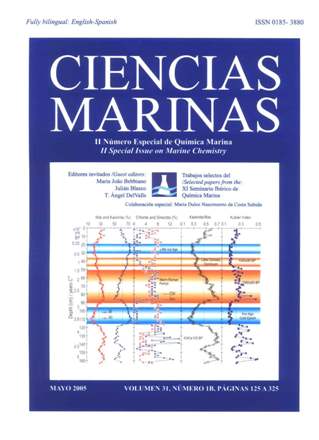Dilution and autodepuration processes in a coastal system affected by urban wastewater discharges: Case study of the Iro River estuary (southwestern Spain)
Main Article Content
Abstract
Dilution and autodepuration processes in an estuary of strong tidal regimen affected by sewage from a wastewater treatment plant have been studied and identified. To differentiate between both processes, three evaluations were made during different seasons. Two tests were developed in parallel during each evaluation: characterization of the estuary and microcosm trials. In both tests, the evolution of diverse microbiological and physicochemical parameters were examined. From the microbiological results, T90 for the faecal coliform (FC) and faecal streptococci (FS) bacterial groups were obtained. In the estuary, dilution was identified as the most important microorganism reduction process, with T90 of 12.2–40.8 and 11.7–53.5 minutes for FC and FS, respectively. In the microcosm trials, salinity was the main autodepuration factor, with T90 of 3.1–42.6 and 4.6–54.8 hours for FC and FS, respectively. The FC group proved to be the most sensitive bacteria to autodepuration processes and FS the most adaptable to the adverse conditions of the aquatic environment.
Downloads
Article Details
This is an open access article distributed under a Creative Commons Attribution 4.0 License, which allows you to share and adapt the work, as long as you give appropriate credit to the original author(s) and the source, provide a link to the Creative Commons license, and indicate if changes were made. Figures, tables and other elements in the article are included in the article’s CC BY 4.0 license, unless otherwise indicated. The journal title is protected by copyrights and not subject to this license. Full license deed can be viewed here.

